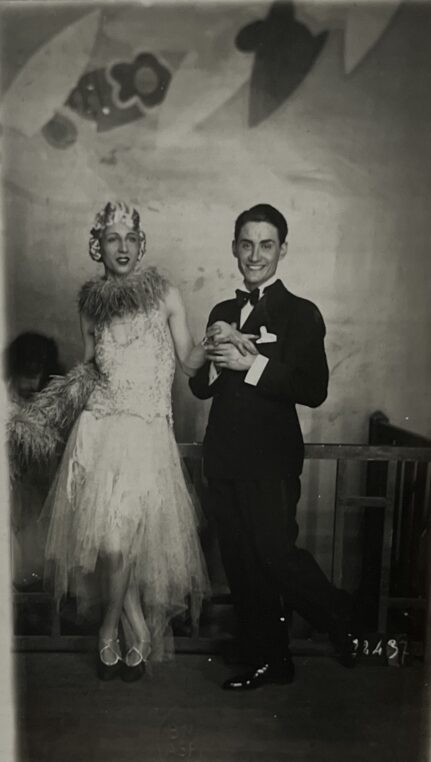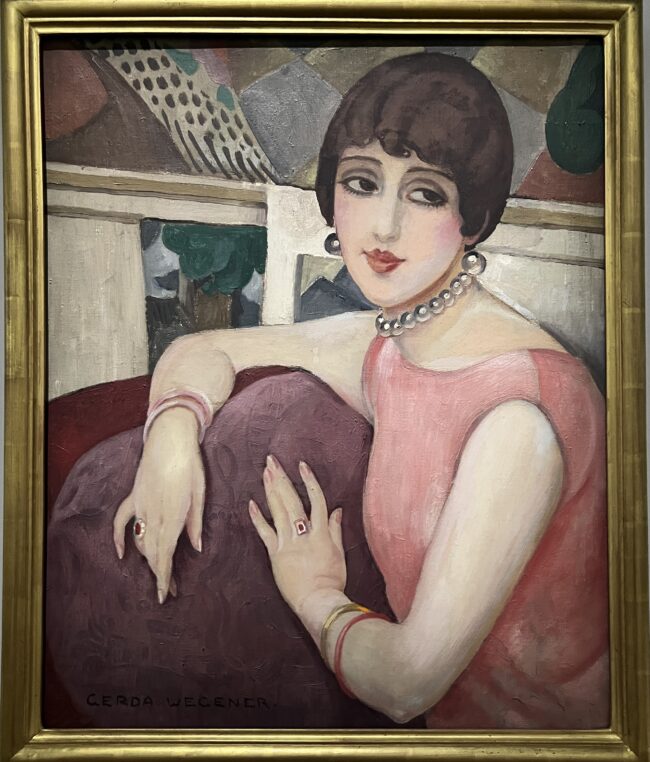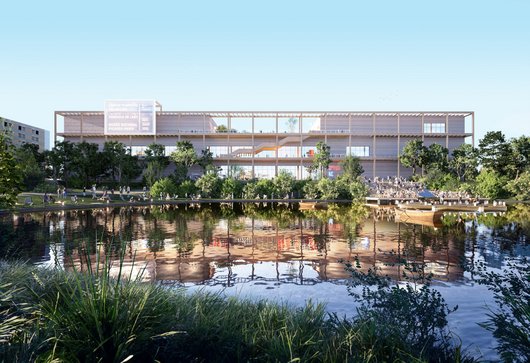Surfing on the LGBTQIA+ wave, a small exhibition “Over the Rainbow” is showing, on the ground floor of Centre Pompidou, a few paintings and photographs on the topic of homosexuality, which belong to Musée d’Art Moderne. And there are some finds which make the visit worth while. Thirty photos of transvestites photographed in 1931 at the Magic City ball, 180 rue de l’Université, in Paris, where a studio had been set up for two yearly Mardi Gras events. Two inks on paper by Andy Warhol “Male partial figure” and “Standing male nude” from 1956, show what a great draftsman he was. Jean Cocteau also, whose portrait of Raymond Radiguet, his young lover who died of typhoid fever at 23, is ravishing. Berenice Abbott, Brassaï, Diane Arbus, all contribute as photographers in the show curated by Nicolas Liucci-Goutnikov. Women and men are studied and revealed in a time where gay behaviors were both hidden and freer than we think. The other news is the opening in 2026, of a Centre Pompidou francilien in Massy, just outside Paris, which will house the reserves for the 140 000 works owned by the museum (and the Picasso museum) and offer space for restoration and education. The budget of 105 M€ will be divided between the region, the town of Massy and the state.
A pretty illustrated book of Pierre Louys’ “Douze chansons de Bilitis” 1937 reminded me of when a teenager, we read his books with a great sense of guilt. “La Grosse Claude and her friend” a photo by Brassaï is much rougher. The photographer liked to take pictures at “Le Monocle” a lesbian cabaret run by Lulu de Montparnasse and socialized by upper class ladies. For Diane Arbus, its men dancing at aDrag ball in New York City. Danish painter Gerda Wegener paints her lover Lily whom she will marry before her trans operation, when she is still a man… a marriage which will be annuled in 1930.
A section is devoted to songs selected by Martin Pénet, a subculture as he describes it, which developed in cabarets, carnaval balls, bars and bookstores. Felix Mayol during the Belle Epoque performed at la Scala and at l’Eldorado. Charpini, a singer who could switch from barytone to soprano, performed at Théâtre des Capucines in 1926 and at the Bosphore on rue Thérèse. O’dett, a transvestite ,sang in Montmartre between the wars and was the champion of caricatures including imitations of Minstinguett. Suzy Solidor, is the first singer to publicize her lesbianism and she opens a cabaret La Vie Parisienne near the Opera. After the war, Charles Trenet, Jean Sablon and Gribouille perform discreetly.

SEM, cover for the partition of “Cousine de Mayol”, words by Lucien Boyer, music by Albert Valsien, collection Martin Pénet
The catalog is almost more interesting than the exhibition which is irritating at times with its wokisms. But make sure to see it (until November 13) when you visit the Norman Foster show upstairs (until August 7). Centre Pompidou will sadly be closing for five years starting at the end of 2025.
The Centre Pompidou francilien/Musée National Picasso, for which a contract was signed this week for 25 years is a pale copy of Centre Pompidou (as far as one can judge from the model) designed by Philippe Chiambaretta, for Vinci. It is located on a former rugby field, in a park with a pond and will offer a “roof top” for entertaining, and embody the culture “on the other side of the périphérique”. While the Pompidou center is closed for renovations, it might house some exhibitions and cultural events. Its main attraction is that it will be at the heart of the new scientific research campus of Saclay. The very dynamic mayor of Massy, Nicolas Samsoen, declared “Ma joie est immense” (I am hugely happy) at the prospect of turning his town of 51 000 inhabitants into both a scientific and an artistic capital with as strong educational dimension.
Laurent le Bon who is president of Centre Pompidou since June 21 presented the project with a great sense of humor amid the political and administrative bla bla. 105 million € seems to me a very large sum to create reserves for two museums, as precious as they are. Let’s hope that this new center does not just become a political excuse to tame the banlieues… In 2027, a new subway line 18 will connect Massy to Orly and Paris via line 14. But will Parisians want to commute to Massy to see exhibitions?
Share this Post





One Comment on ““Over the Rainbow”, at Centre Pompidou, celebrates homosexuality in art”
Good work Laure! Thanks for all your fine info.